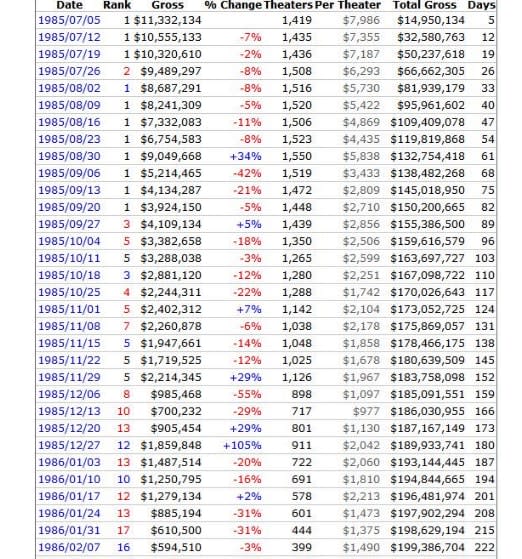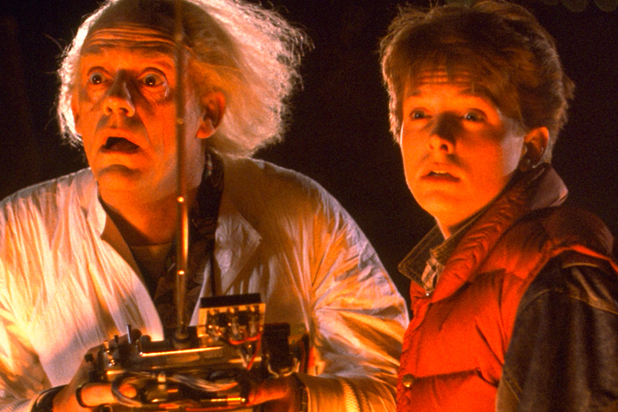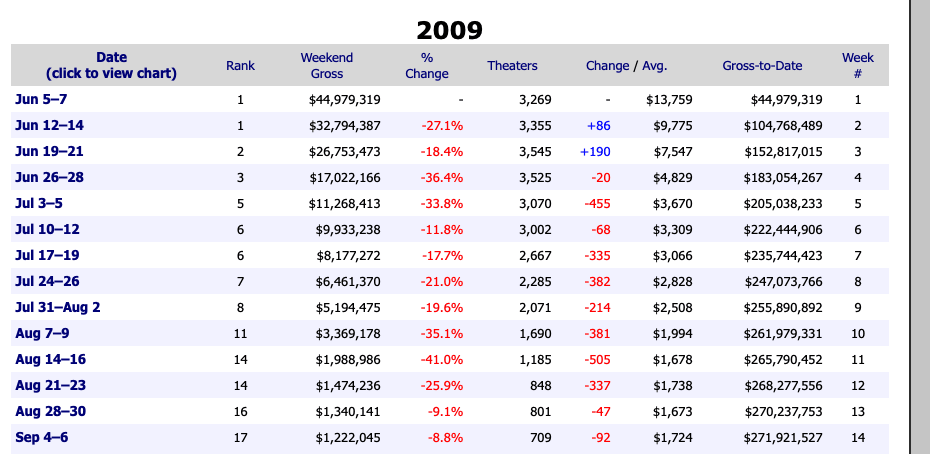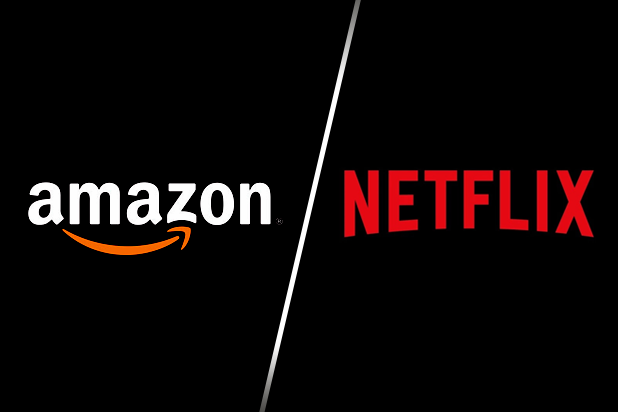The Slow Death of Hollywood (Guest Blog)
Earlier this month, The Information published an article on Netflix’s new spending patterns on content. There’s an important tidbit in the piece, which suggests that a new era of control and centralization in Hollywood will soon be upon us:
“[Netflix] now routinely ends shows after their second season, even when they’re still popular. Netflix has learned that the first two seasons of a show are key to bringing in subscribers–but the third and later seasons don’t do much to retain or win new subscribers.”
So the company is trying to get new subscribers and wants to keep old subscribers just happy enough to not quit the service. And there’s this other tidbit:
“Ending a show after the second season saves money, because showrunners who oversee production tend to negotiate a boost in pay after two years.”
This passage, and the whole article, is framed by the notion that Netflix is becoming more budget conscious and metrics-driven. But really Netflix’s strategy is straightforward market power exploitation. The company is cancelling shows that subscribers like so it won’t have to pay creators the amount they would otherwise be able to get for making good commercially successful art. In other words, Netflix is subtly raising prices on subscribers and paying creators less for their work.
How can it do this? Doesn’t it face a competitive threat when it raises prices, stiffs suppliers, and reduces quality?
The answer that the company is betting on is that it won’t. There’s a business strategy angle, but fundamentally this is a political bet. Netflix executives believe that the public will tolerate monopolistic market structures.
The Old Non-Studio System
The current streaming wars are a story of technology, but also a story of public policy levers enabling corporate concentration and the resulting abuse of market power.
Also Read: Netflix With Ads: Impossible or Inevitable?
Let’s take a look at how Hollywood used to work. [Here] is the box office timeline for one of the most successful comedy action family movie franchises of the 1980s, “Back to the Future.”

Box office stats for Back to the Future
This movie was made because the creators of the film had a good track record, making money with an earlier hit, “Romancing the Stone.” And as the executives at the studio saw the final version, they were quite excited about “Back to the Future,” because they knew they had a hit on their hands. But why?
It’s not as if the opening weekend was great, by today’s standards. The movie took in $11 million on its opening weekend, a fraction of the $385 million it eventually made. And as comedian John Mulaney points out, “Back to the Future” isn’t an intuitively sellable story. It is, in fact, very weird. The plot is organized around a teenager who inexplicably has a disgraced nuclear scientist best friend. Both the teenager and the scientist go back in time to avoid terrorists who gave the scientist weapons-grade uranium to build them an atomic bomb, and in doing so the teenager gets into some very odd sexual situations with his mother. Hijinks ensue. That’s it.
Yet… it worked. Art is like that. There’s just no formula, and a good artist can make good art in unexpected ways. But it didn’t sell like today’s movies sell, with a $200 million marketing budget and the movie being simultaneously screened on thousands of theaters all over the world, with the opening weekend basically determining the result.
The roll-out of the film was gradual. The movie sold tickets at roughly the same level as its opening weekend for roughly a month. And in fact, theater owners kept demanding “Back to the Future” from distributors, so much so that two months after it came out in theaters, the movie was shown in more theaters than it was shown in on opening weekend.
In other words, “Back to the Future” was put into a “market,” where information circulated among buyers and sellers before buyers bought. Critics played a role in supplying this information, as did word of mouth from viewers, who told one another about how exciting and fun the movie really was. Theater owners also exchanged information about what was selling and what wasn’t.
Today, especially in the summertime movie season, this kind of roll-out would be crazy; the first weekend is what matters, and you throw your best stuff on four thousand screens in the U.S. and thousands more abroad, spend enormous amounts on marketing, and hope for the best. There’s much less of a market, and much less information circulating, even though we have the internet and much better mechanisms for moving information to one another.
Also Read: How Quibi CEO Meg Whitman Plans to Bring 'Watercooler' Shows to Mobile Video
In 1985, theater owners had more choices about what content to sell, and could decide to distribute content that was well-liked and popular without assuming a massive barrage of marketing would force them to stock the most popular stuff immediately. So they could afford to show different movies, experiment, and then bring in the popular ones over time. The video industry in general was more decentralized. Stars, directors and writers with good track records, studios, distributors, movie theaters, critics, and moviegoers shared power.
The structure in which “Back to the Future” was released was a result of different public policy choices. These harken back to bitter battles in the 1930s and 1940s between New Deal antitrust attorneys and studio heads, which culminated in the Paramount Consent Decrees of 1948 and the end of the autocratic so-called ‘Studio System.’ These decrees forced studios to sell their theaters, and prevented them from engaging in tying and bundling practices to force theater owners to take their films. New Hollywood, with youthful countercultural stars like Jack Nicholson, emerged in the 1960s to totally revamp the industry, and global culture. In 1985, weird popular movies like “Back to the Future” were still taking advantage of this relatively open market structure.
A similar decentralized structure existed in the television industry, which was broken apart in 1970 by Richard Nixon’s FCC with financial syndication rules(‘Fin-syn’). These rules blocked TV networks from distributing their own content in prime time, opening the market for TV content to third party producers who would take more creative risks. “The Cosby Show,” “Seinfeld,” “The Mary Tyler Moore Show,” and “All in the Family” were some of the results of this policy choice to open up the TV market.
Both the Paramount Consent Decrees and the Fin-syn rules were designed to break creative industries into a three-tiered structure: production, distribution, and retailing. Producers were prohibited from vertically integrating into the traditional distribution business. That way, there are fewer conflicts of interest in the content business; producers had to create high quality work, and if they didn’t, distributors could choose to sell someone else’s art. Policy removed power as the mechanism of competition, and emphasized art.
The New Studio System Emerges
In the 1980s and 1990s, media companies consolidated. Time and Warner Brothers became Time Warner. So did movie chains. Regal Cinema and AMC began rapid expansion, borrowing large amounts of money to buy competitors and build megaplexes. In 1995, the top five movie chains owned a third of movie theaters in the country, with the biggest, Carmike, owning around 2500 total. By 2016, the top five movie chains owned over 53% of the move theaters in the country, with the largest, AMC, owning 8,380.
Also Read: Quibi: How Past Short-Form Video Fumbles Signal Tough Road Ahead
This increase understates the picture; in terms of screens and revenue, the larger chains built megaplexes, with dozens of screens, far more than the single theater in a small town. As junk bond kings came into the business and used debt to finance a build-out, the radical increase in size of theaters changed the art of moviemaking. This is a Wall Street Journal story from 1998:
“The original theory of putting 25 screens in one location was that a single theater could play every film in the marketplace at that time. Instead, theater operators are choosing to play mostly the biggest hits on several screens, with new shows beginning every 20 or 30 minutes.That appears to be creating a situation in which films do most of their business in the first two or three weeks, rather than over a couple of months.
“In other words, “Back to the Future” was a good bet in 1985, because a great original film could compete in an open market. But that began changing in the 1990s. And today, there is no such market, because distributors have so much more power. Because you break through their bottleneck only with a brand so strong-like Marvel or Star Wars-the biggest studios with the most branded content have accumulated massive amounts of power.”

Back to the Future
Today, “Back to the Future” might still be a success if it were released as it was created, but in all likelihood, studio heads would no longer greenlight such a movie in the first place.
Where Are the Great Comedies?
The easiest way to see problems in market structure is to look at the comedy segment of the market, which is a form of art that has very limited economies of scale. One could quibble about creativity, but it’s generally thought in Hollywood that the last great comedy franchise to launch was “The Hangover,” created in 2009. There have been a few others, like “Pitch Perfect” and “21 Jump Street,” but those both came out around the same time, in 2012. There effectively have been no comedy smash hits for nearly a decade.
Here’s the box office run of “The Hangover.” It looks a bit like “Back to the Future,” with a slow-ish roll-out, word of mouth, and so forth. But even here, “The Hangover,” which has a similarly weird plot, had a more accelerated roll-out. Maximum reach hits in week three, not in the second month. And the movie made most of its domestic take after a month.

Box office stats of The Hangover
After “The Hangover,” there were a few more great comedy franchises, but none since 2012. Audiences haven’t noticed, because the failure to get great comedies to the box office is masked by what is known as ‘Peak TV.’
Today, Netflix, Disney, and every would-be streaming service are tossing money at producers to create content for them. And YouTube seems to be a surfeit of endless content. But these are largely mirages. Peak TV is a bubble, which will pop when the winners shake out. YouTube has been fighting over copyright for a long time, because copyrighted content is very important to the service. Moreover, the artists doing well are at the very top with everyone else left behind. In fact, median wages for writers are droppingquite quickly, down 23% from 2014 to 2016, which is a similar amount as the fall in earnings for book literary authors after Amazon launched its vertically integrated Kindle e-book reader.
In fact, without significant public policy changes, it is far more likely that the future of Hollywood much more closely resembles the sterile movie cineplex than, and less the temporarily abundant surplus of content on streaming services.
Netflix and the Death of Hollywood
All of this brings me back to Netflix, which is doing something beyond just centralizing distribution and production. It is also deliberately losing money.
This is a very dangerous practice. In the old system, studios sold content, often over-priced, often shoddy, but they sold it to people who bought it. The end network, either theaters or TV stations, had to choose from distributors what content to offer to customers. They had to make money to stay alive. They had to follow one of the basic rules of pre-1981 American competition policy, which is that combining inputs into a final output should create a profit, an indication that the business agent has in some way generated something of value. This means that if you build a better mouse trap, or in this case, a movie or show people want to see, you can get it to market and sell it.
But Netflix violates this rule. Despite its claims of accounting profits, Netflix is a massive money-loser, projecting it will burn through $3.5 billion in cash just this year. Netflix is taking inputs and combining them into something that is of less value than those original inputs. But the company doesn’t really care if people watch its content, because it doesn’t sell content. The company is selling a story to Wall Street, that, like Amazon, it will achieve dominant market power. The story is that users will buy Netflix streaming services and it will be too much trouble to switch to a different service, which is a variant of a phenomenon called “lock-in.” So no one will be able to compete, the company will be able to raise prices and lower costs, and voila, another Amazon-style monopoly. It will be one of the few left standing after the inevitable shake-out.
To sell this story to investors, the company is interested only in adding subscribers, resulting in a set of choices whereby it underpays creators, and under-delivers for existing subscribers. And it still burns through money, but it can do so as long as it can sell its debt into the marketplace and its stock remains high. This creates an impossible burden on anyone who wants to make art and sell it in competition with Netflix, be that person an artist or a major studio; it’s simply impossible to compete at making better goods and services if your competitor can lose money indefinitely. Again, artists don’t notice this problem, because they like selling to Netflix. But they will notice, as Netflix’s strategy of underpaying them becomes more obvious.
Netflix Rebuilds the Studio System
Netflix, aside from losing money, has also slowly reconstructed the old vertically integrated studio system. The company is an integrated production and streaming service; if you want to distribute through Netflix, you work increasingly on Netflix’s terms, and vice versa. And Netflix pushes whatever content it wants at Netflix users, based on whatever algorithm it chooses. This is a similar story as Amazon, which spends large amounts of money on content, with content being a mostly minor part of its otherwise massive business. These are long-term predatory pricing plays, with predatory pricing meaning selling below cost to acquire market power, a practice that used to be illegal prior to the 1980s. Of course, these rules are not absolute; powerful creatives still have leverage, but the broad middle of creators do not.

Netflix and Amazon are driving what I call “Concentration Creep” across the industry. Concentration Creep means that consolidation in one part of an industry causes consolidation in other parts. Disney, for instance, is trying to mimic Netflix by launching what may be a below-cost streaming service. It also bought Fox’s media assets, so it can bulk up and gain market power. And Trump’s Antitrust chief, Makan Delrahim, is considering getting rid of the Paramount Consent Decrees, which might prompt Amazon or Netflix to simply buy a movie theater chain.
It’s becoming increasingly clear that the only goal now in Hollywood is to gain market power in distribution or must-have content production, and then use that monopoly power to reduce the quality of output and reduce the bargaining leverage of artists. Even the agents, who are supposed to represent artists, are getting into the vertical integration game. The net effect is higher prices, less pay to artists, a less creative industry, and ultimately, the death of the Hollywood ecosystem of storytelling.
Such a dynamic isn’t just a problem in terms of a more arid artistic world, but is a political and national security problem. We learn a lot from our movies and TV shows, including about politics and geo-politics. The U.S. military tends to subsidize movies that make them look good; with fewer producers of movies, such subsidies will have more impact, and perhaps make it less likely artists criticize the state or powerful corporations. But the free expression problem imports overt government censorship into America and the entire West.
The centralization of power in a few studios and chains is global. In 2015, the U.S.-China Security Review Commission noted that Hollywood now obeys Chinese censors pretty much all films, even those made and distributed solely in the West. Unless this system is restructured, it is unlikely we will see any critical depictions of Chinese government actors again, which has parallels to the Studio System in the 1930s pandering to Nazi Germany.
Can Hollywood Be Saved?
So what now?
Earlier this year, billionaire Barry Diller pronounced Hollywood “irrelevant.” In the old days six companies controlled the market, and if someone else got big enough to matter, a studio bought the new player. “In other words,” he said, “it used to be if you could get your hands on a movie studio, you were sitting at a table with only five other people.”

Barry Diller
Today, Amazon and Netflix are too big and powerful to be bought, and have found a way to produce and distribute content that studios can’t touch. “Those who chase Netflix,” he said, “are fools.”
This is a very billionaire-y perspective, and like all billionaires who made their money in the 1980s, Diller chooses to ignore the impact of public policy on industry structure, and how power was broadly shared. But there’s a grain of important truth in what he’s saying. The old system *is falling apart,* and a new far more concentrated one is emerging.
But there’s no reason we have to build a highly concentrated storytelling industry on top of the internet, which used to be the most decentralized communications technology ever imagined in human history. The answer to the question of whether Hollywood can be saved is a resounding YES. Fundamentally, streaming is a commodity service; Netflix isn’t anything special, it’s just a good infrastructure service which has morphed into a monster attempting to control our access to content. Disney is just trying to become a monopoly studio of branded must-have content, and reproduce Netflix’s power. Movie chains are too big. And so on and so forth. These are all just politicalchoices.
In other words, we should aim to restore open markets for content again. This means separating out the industry into production, distribution, and retailing. We should probably ban predatory pricing so Netflix isn’t dumping into the market. And we should probably begin a radical decentralization of chains and studios.
This is all possible. We’ve done it before, and we can do it again. I love movies, and I think Hollywood is worth saving. And while I wouldn’t recommend “The Hangover III,” great comedies help us see ourselves as the absurd creatures that we really are.
Read original story The Slow Death of Hollywood (Guest Blog) At TheWrap

